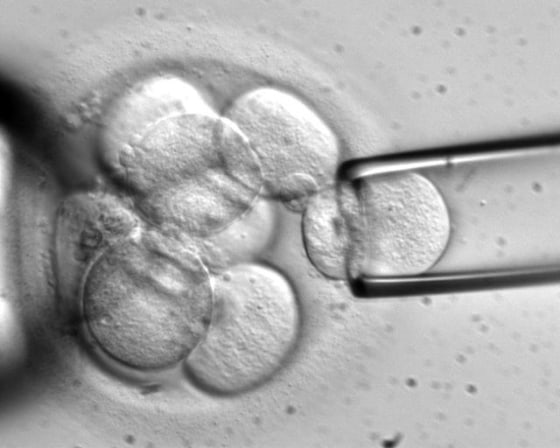Researchers say they have made powerful stem cells from both young and old adults using cloning techniques, and also found clues about why it is so difficult to do this with human beings.
The team, at Massachusetts-based Advanced Cell Technology and the Institute for Stem Cell Research in Los Angeles, say they used the cloning methods to create the stem cells to match a 35-year-old man and a 75-year-old man.
They used a bit of skin from each man, took the DNA from the skin cells and inserted it into the egg cell of a female donor, and grew very early embryos called blastocysts, the team reports in the journal Cell Stem Cell. Cells from these embryos closely match the men and could, in theory, be used to make near-identical tissue, blood or organ transplants for the men.
If verified, it would be only the second confirmed time someone’s been able to use cloning methods to make human embryonic stem cells, considered the body’s master cells.
“Therapeutic cloning has long been envisioned as a means for generating patient-specific stem cells that could be used to treat a range of age-related diseases,” said Dr. Robert Lanza, chief scientific officer for Advanced Cell Technology.
“However, despite cloning success in animals, the derivation of stem cells from cloned human embryos has proven elusive. Only one group has ever succeeded, and their lines were generated using fetal and infant cells.”
That was last year, at Oregon Health & Science University.
When human embryonic stem cells were first discovered in 1998, scientists immediately dreamed of using cloning technology to help people grow their own organ and tissue transplants, and to use them to study disease. They’d be perfect genetic matches for each patient, meaning an end to a lifetime of taking dangerous immune-suppressing drugs after an organ transplant.
But in the many years since, no lab’s been able to do the work easily. It seems it is much harder to clone a human being than it is to clone a sheep, a frog or a mouse.
And using the cloning technique is controversial, because it involves creating, then destroying, a human embryo.
“Without regulations in place, such embryos could also be used for human reproductive cloning, although this would be unsafe and grossly unethical,” Lanza told NBC News.
“We also saw that the embryos that developed the furthest were from the same egg donors, suggesting that genetic variation between egg donors plays an important role in the developmental potential of cloned embryos.”
